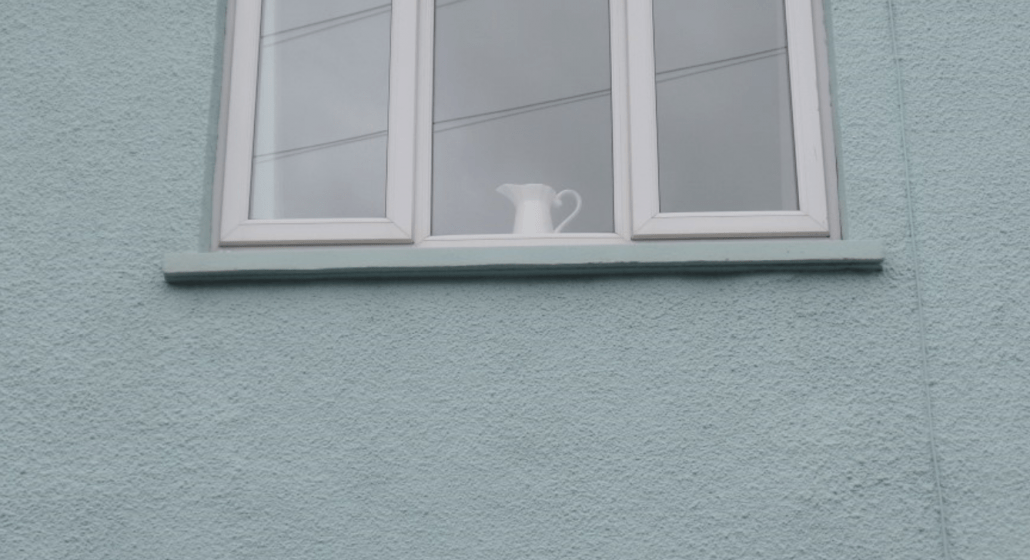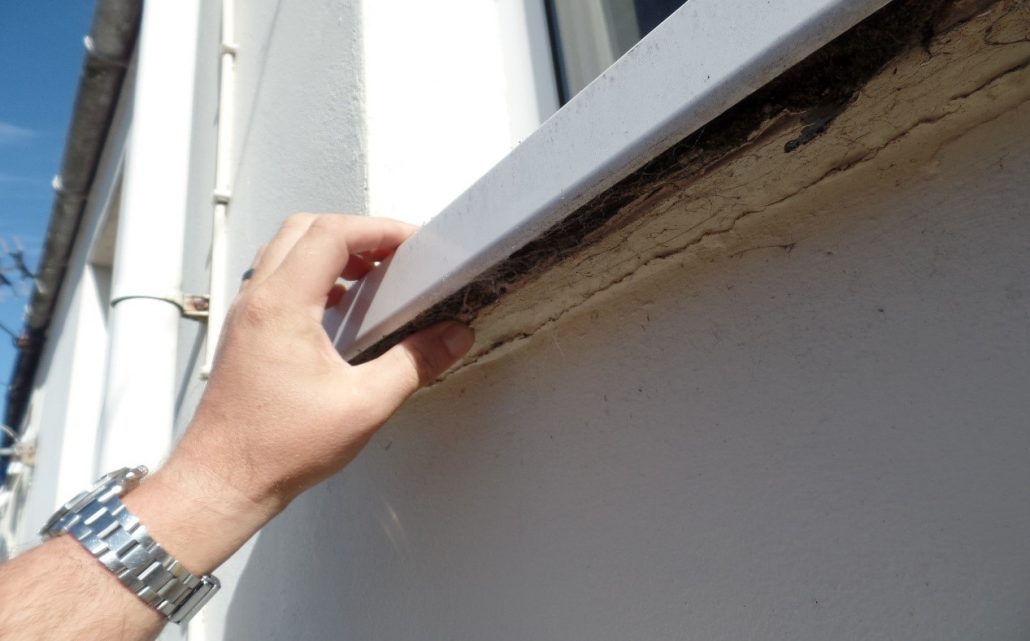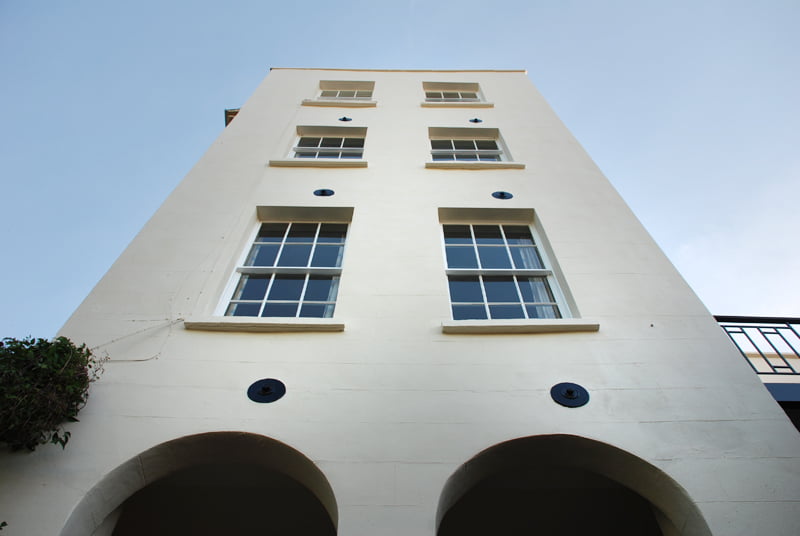Window Sills
Window sills are not just decorative – nor are they simply supports for window boxes!
They contribute an important weather-proofing function to the building. They should be designed to shed rainwater away from the wall. This prevents it penetrating into the wall beneath the window frame. However, to do this, the sills must be well sealed into the wall. The window frame should also be well sealed around the edges.
Stone Sills
Traditionally in stone built and Victorian era housing, stone was used for the sills. In Bristol this was normally oolitic limestone on front elevations, “Bath stone”. Sometimes other types of stone were used, such as in Kingswood were Basalt type stone is seen. These sills lasted well when regularly painted with a lime wash or breathable paint to act as a sacrificial barrier. Now however we often see them painted with non-breathable masonry paints. This traps moisture in the stone causing them to delaminate, which is very sad sight to see, these elements seem often forget even in the grander properties that we survey.
Concrete Sills
We have seen many dampness issues where the window sills have been rendered over or around and this has caused damp to penetrate through the walls beneath. Defects in sills can allow dampness to creep in as in this case – watch our video.
The underside of this concrete sill has a throated capillary drip like a groove cut into the underside of the sill to help prevent water running back under the sill and into the walls below the window sill;

In buildings constructed in the 1930’s and 1950’s metal reinforced concrete became popular. Due to the composition of the concrete, a chemical change occurs over time; the embedded metal will then rust. This causes the sills to be blown apart, as can be seen below. This is not uncommon hence we look for any straight-line cracks on concrete windows sills, which indicates the condition of the metal reinforcements. The best method of repair is to cut out and replace such damaged sills.

UPVC Sills and Cladding
UPVC windows normally include the option of a light weight extruded UPVC sill which finishes the window in a matching colour. Cladding can also be used – but in the case below in Highbridge near Burnham, the UPVC has been clad over a decayed timber sill. This is clearly not ideal! The timber should have been cut out and a new extruded UPVC sill installed, which would have been fairly easy as the timber is so rotten…


